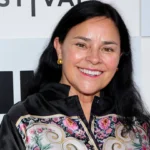Fashion is an exciting, dynamic industry that blends creativity, business acumen, and culture. Whether you’re passionate about designing clothes, running a fashion brand, or managing a luxury store, the business of fashion careers offers a diverse range of opportunities. In this article, we’ll explore various paths you can take in the business of fashion, from entrepreneurship to marketing, and how to break into these lucrative careers.
What is the Business of Fashion?
The business of fashion careers is a multi-faceted industry that covers everything from garment design to retail sales, marketing, and fashion management. It’s a fast-paced, ever-evolving field where trends change rapidly, but the foundation of strong business practices remains the same.
Fashion is not just about designing pretty clothes—it’s about turning creativity into a profitable venture. Whether it’s through fashion retail, design, marketing, or distribution, all these areas require skilled professionals who understand both the art and the science behind fashion.
Key Areas of the Fashion Industry
The business of fashion careers can be categorized into several key areas, each offering unique career paths. Here’s a quick overview:
Fashion Design
Fashion design is the art of creating clothing and accessories. Designers work with fabrics, colors, and patterns to create new looks. They often have strong knowledge of textile science and trends.
- Key Skills: Creativity, sketching, knowledge of fabrics, and technical drawing.
- Career Opportunities: Fashion designer, assistant designer, costume designer.
Fashion Marketing and Public Relations (PR)
Fashion marketing and PR involve promoting and selling fashion products to the public. It’s all about creating buzz, advertising, and managing the brand’s image.
- Key Skills: Strong communication skills, marketing knowledge, trend awareness.
- Career Opportunities: Marketing manager, PR specialist, brand strategist.
Retail and Fashion Merchandising
Retail involves the direct sale of fashion products, while merchandising involves strategically placing and selling the products in-store or online.
- Key Skills: Sales, customer service, trend analysis, and inventory management.
- Career Opportunities: Store manager, visual merchandiser, retail buyer.
Fashion Photography
Fashion photography is an essential part of the fashion industry, as it involves capturing the essence of fashion in images. Photographers work closely with designers and models to shoot fashion campaigns and magazine covers.
- Key Skills: Photography techniques, knowledge of lighting, creative direction.
- Career Opportunities: Fashion photographer, photo editor, art director.
Fashion Business Management
Fashion business management involves overseeing the operations of fashion companies, ensuring that everything runs smoothly from production to distribution.
- Key Skills: Leadership, financial management, supply chain logistics.
- Career Opportunities: Fashion entrepreneur, operations manager, production coordinator.
How to Break Into the Business of Fashion Careers
Breaking into the business of fashion careers requires a combination of formal education, industry experience, and networking. Here’s how you can get started:
1. Education and Training
A formal education in fashion can help you understand the technical and business aspects of the industry. Many fashion schools offer degree programs in fashion design, marketing, business, and merchandising. You can also consider short courses in specific areas like fashion photography or public relations.
2. Internships and Work Experience
Internships are a great way to gain hands-on experience and get your foot in the door. Many fashion companies offer internship programs, where you can learn about the industry’s day-to-day operations, build connections, and even get hired full-time.
3. Networking
Networking is essential in the fashion industry. Attend fashion shows, connect with professionals on LinkedIn, and engage with industry leaders on social media platforms. Building relationships can lead to job opportunities and mentorship.
4. Building a Portfolio
For creative careers like fashion design and photography, having a strong portfolio is key. Your portfolio should showcase your best work and highlight your creativity, skills, and technical abilities.
5. Stay Up to Date with Trends
Fashion is constantly evolving, so it’s crucial to stay informed about the latest trends. Follow fashion magazines, blogs, and influencers to stay updated on industry news.
The Financial Side of Fashion Careers
While working in fashion can be highly rewarding creatively, it’s also important to understand the financial side of the industry. From salary expectations to career growth, here’s what you can expect:
Earnings in Fashion Careers
The salary in the business of fashion careers can vary significantly depending on the specific role, experience, and location. Here’s a breakdown of typical salaries:
| Job Title | Average Salary |
|---|---|
| Fashion Designer | $62,000 per year |
| Fashion Marketing Manager | $70,000 per year |
| Fashion Retail Manager | $55,000 per year |
| Fashion Photographer | $50,000 per year |
| Fashion Entrepreneur | $100,000+ per year |
Job Outlook and Career Growth
Fashion careers can offer high earning potential, but they also come with a competitive job market. Many roles require years of experience and a proven track record to climb the ranks. However, if you’re willing to work hard and stay committed, the rewards can be significant.
Key Trends Shaping the Business of Fashion Careers
The fashion industry is evolving at a rapid pace. Here are some key trends shaping the business of fashion careers:
Sustainability in Fashion
Sustainability is becoming a key focus in the fashion industry. More brands are prioritizing eco-friendly materials, ethical manufacturing processes, and reducing their carbon footprint. As a result, roles in sustainable fashion design, sustainable fashion marketing, and corporate social responsibility are in high demand.
Digital Transformation
Technology is changing the way fashion businesses operate. E-commerce, digital marketing, and social media platforms like Instagram have become essential tools for fashion brands to connect with their audience. Digital influencers are also playing an increasingly important role in shaping trends.
Inclusivity and Diversity
Fashion brands are embracing diversity, with a growing focus on inclusivity in size, race, and gender. This shift has led to the rise of plus-size models, gender-neutral fashion, and more representation in campaigns and runway shows.
Conclusion
The business of fashion careers offers a wide range of exciting opportunities for those who are passionate about both creativity and business. Whether you dream of becoming a designer, a marketer, or a retail manager, there’s a place for you in this vibrant industry. By building your skills, gaining experience, and staying informed about industry trends, you can forge a successful career in fashion.
As you explore the diverse paths available in the fashion industry, remember that the business of fashion isn’t just about selling clothes—it’s about creating experiences, driving innovation, and making a lasting impact. So, if you’re ready to turn your passion for fashion into a career, the opportunities are waiting for you!






